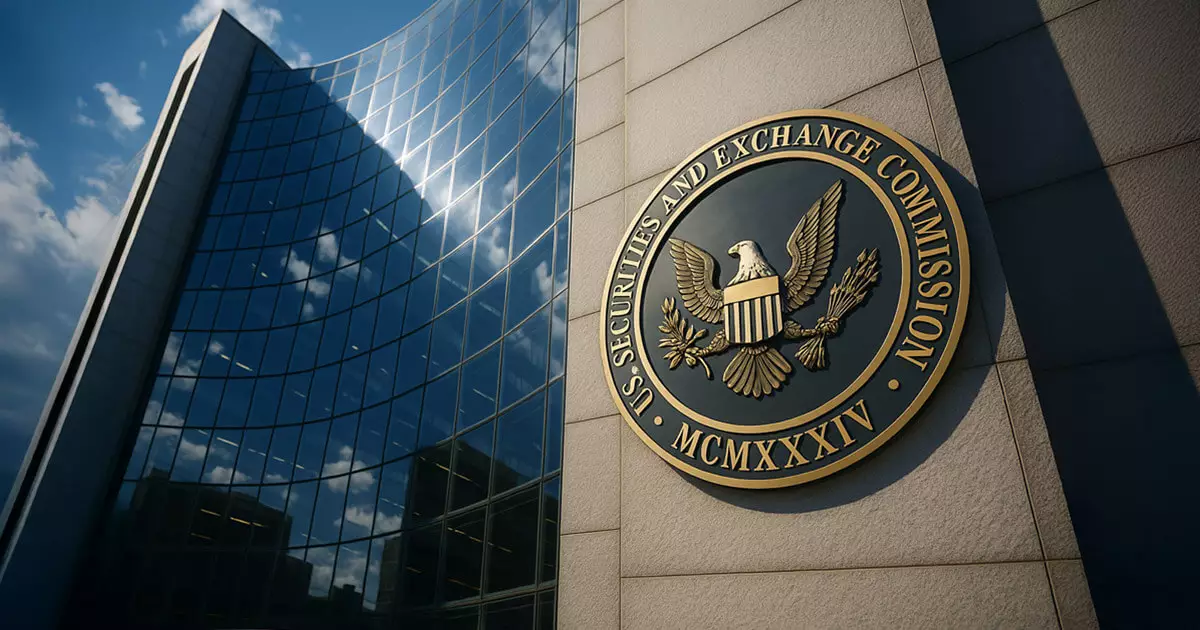Recent guidance from the US Securities and Exchange Commission (SEC) marks a pivotal moment for digital assets, potentially paving the way for wider institutional adoption. On May 15, the SEC released an updated FAQ that discussed how current securities laws apply to brokers and transfer agents engaged in cryptocurrency services. While this move has been labeled “incremental” by SEC Commissioner Hester Peirce, it serves as an interesting commentary on the evolving regulatory landscape for digital assets. The guidance doesn’t completely overhaul the existing framework but provides clarity that financial institutions have long awaited.
No one should underestimate the significance of this development. It underscores that the SEC recognizes the need to offer some regulatory clarity surrounding the often murky waters of digital assets. Although Commissioner Peirce has expressed that many answers in the FAQ merely rehash existing rules, the fact remains that establishments in the financial sector were desperately in need of this clarity to navigate the rapidly changing digital asset environment.
Institutional Concerns Addressed
Chainlink, a major player in the crypto landscape, has applauded this regulatory update, viewing it as an essential step forward for financial institutions concerned about leveraging public blockchains for record-keeping, compliance, and data privacy. The enthusiasm is not misplaced; the implications of this guidance allow a clearer operational framework where traditional finance can harmoniously coexist with the growing demands of decentralized finance (DeFi).
This shift in regulatory posture is partially attributed to crucial discussions between Chainlink Labs and the SEC Crypto Task Force held earlier this year. The exchanges, which focused on how smart contracts and advanced middleware can satisfy securities laws, hint at a future where technology and regulation are not adversaries but partners in promoting growth and compliance.
A New Framework for Custody Obligations
Another vital aspect of the SEC’s new stance relates to custody obligations for digital assets. By delineating which cryptocurrencies, such as Bitcoin and Ethereum, fall outside the scope of conventional securities, the SEC has provided broker-dealers with a clearer framework. Previously, firms operated amidst uncertainty regarding how to handle different categories of digital assets, but now they can engage with non-security cryptocurrencies without being fully shackled by customer protection rules. This autonomy comes with its own set of risks; customers can no longer lean on protections guaranteed by the Securities Investor Protection Act (SIPA).
These changes suggest that the regulatory environment is evolving to meet technological advancements, but they also raise an important question: Are the adequate consumer protections in place given the increased risks associated with holding non-security cryptocurrencies?
The Role of Distributed Ledger Technology
The SEC’s updated FAQs do not stop at broker-dealers; they extend to transfer agents, noting that distributed ledger technology (DLT) can now be utilized for maintaining securities records. This change extends the potential for core fund operations to transition on-chain, convincing institutions that blockchain is a feasible option. In a financial landscape already burdened with inefficiencies, this leap could unlock enormous cost-saving opportunities in a $132 trillion market desperate for innovation.
That said, the use of DLT will require robust adherence to current securities laws. While the SEC allows for flexibility in the choice of technology as long as it meets compliance requirements, it remains essential that institutions exercise caution. The decentralized nature of blockchain brings about unique challenges regarding security and accuracy, tasks that are paramount to maintaining investor trust.
The Future of Tokenized Finance
Ultimately, the influence of Chainlink in shaping this regulatory framework cannot be overstated. They appear well-positioned as a bridging force between traditional financial infrastructure (TradFi) and decentralized finance, thanks to their established relationships within institutional frameworks. As the SEC hints at sanctioning public blockchains for securities infrastructure, projects like Chainlink could assume the role of essential middleware—the connective tissue that allows these sectors to operate in unison.
With ongoing development of regulatory policies, it is clear that while challenges remain, opportunities abound. The SEC’s stance is a foothold for institutions looking to dip their toes into the burgeoning field of digital assets, offering them the clarity they have sought for so long. The ongoing dialogue between regulators and innovators could signal an era of growth that challenges established norms while fostering a robust framework that thrives on technological advancement. The future is indeed bright for tokenized finance, and the SEC has just thrown open the doors.

